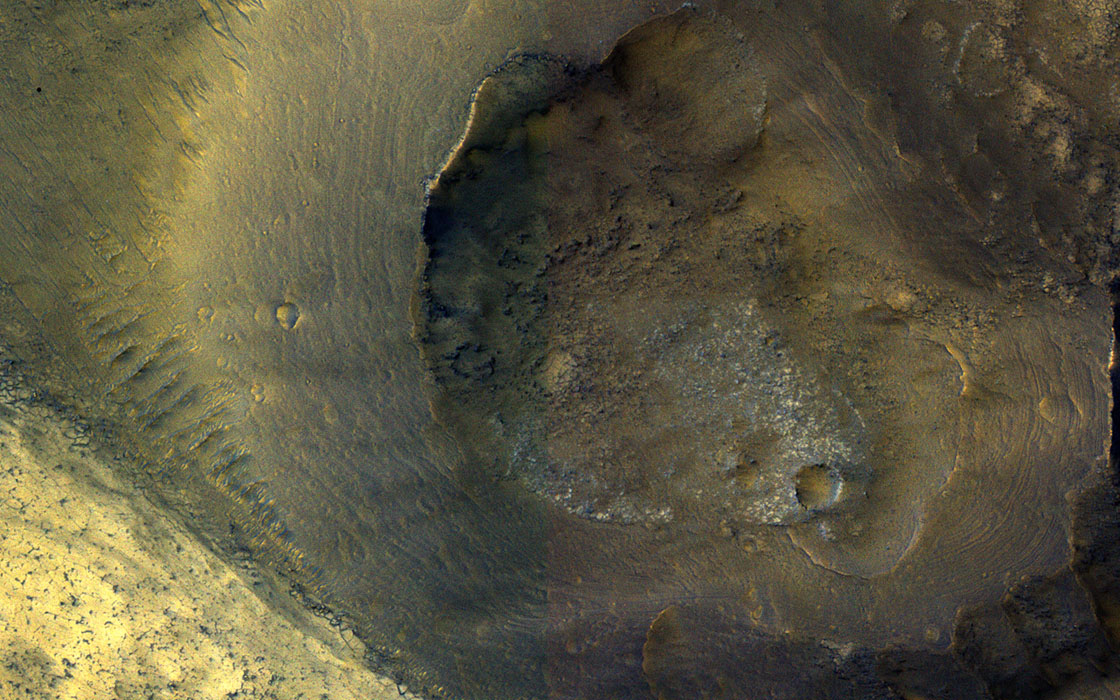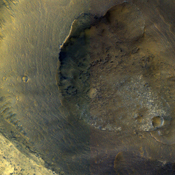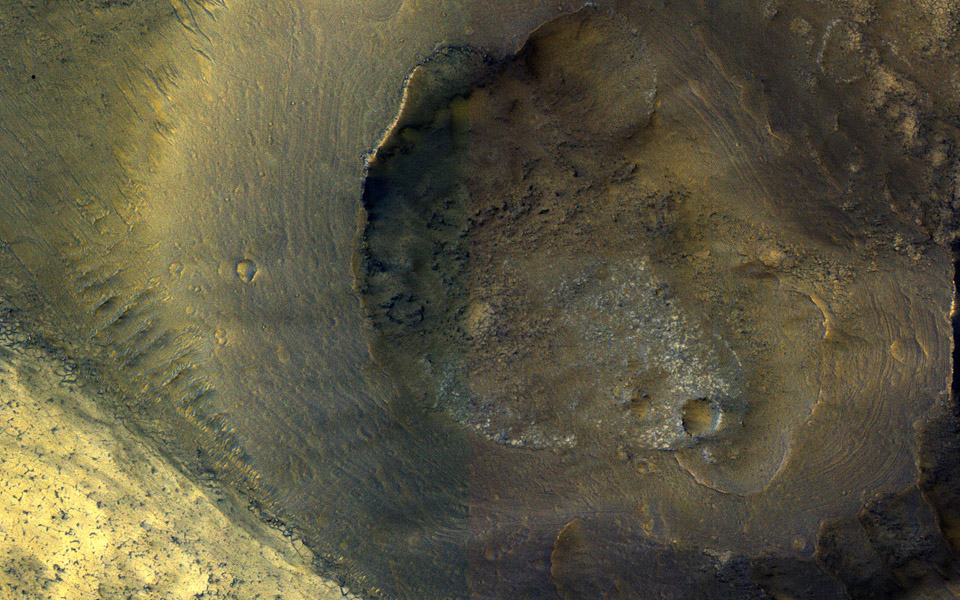A Volcano of Mud or Lava?

| Credit | NASA/JPL-Caltech/Univ. of Arizona |
|---|---|
| Language |
|
Map Projected Browse Image
Click on image for larger versio
This image from NASA's Mars Reconnaissance Orbiter (MRO) shows a hill with a central crater. Such features have been interpreted as both mud volcanoes (really a sedimentary structure) and as actual volcanoes (the erupting lava kind). They occur on the floor of Valles Marineris below a closed topographic contour that could have held a lake, and the compaction of wet sediments may have created mud volcanoes.
The fracture pattern of the bright flow unit surrounding the hill resembles mud cracks. However, there have also been observations from the CRISM instrument interpreted as high-temperature minerals, suggesting actual volcanism, although not necessarily at this location. Fine layers in the hill are consistent with either volcanism or mud flows.
Either way, this activity is relatively recent in geologic time and may mark habitable subsurface environments.
The map is projected here at a scale of 50 centimeters (19.7 inches) per pixel. [The original image scale is 53.1 centimeters (20.9 inches) per pixel (with 2 x 2 binning); objects on the order of 159 centimeters (62.6 inches) across are resolved.] North is up.
The University of Arizona, Tucson, operates HiRISE, which was built by Ball Aerospace & Technologies Corp., Boulder, Colorado. NASA's Jet Propulsion Laboratory, a division of Caltech in Pasadena, California, manages the Mars Reconnaissance Orbiter Project for NASA's Science Mission Directorate, Washington.



